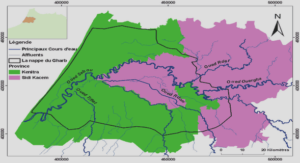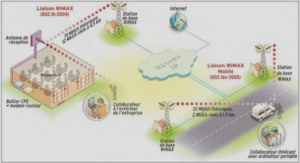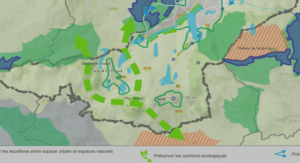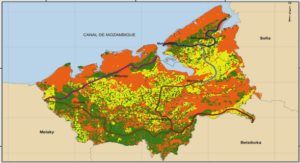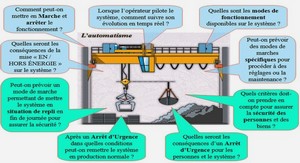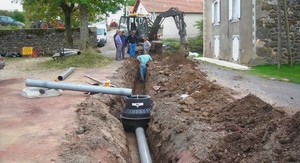Nowadays using aluminum and aluminum alloys has been vastly expanded. Light weight, recyclability, workability and corrosion resistance are among the advantages of this metal that has made it more widely used. Because of the low weight to strength ratio, it has become a preferable material for weight saving purposes in the transportation industries. Extrusion, rolling, sheet metal forming, stamping, die casting, and forging are the conventional manufacturing methods of aluminum products (Davis, 1993; Kaufman, 2000). Beside the common mentioned methods, Super Plastic Forming (SPF) is a specific method of production that could be used for some alloys of aluminum. Superplasticity is a characteristic of a material, which allows applying large strains in a tensile condition before failure. As some of the aluminum alloys show the superplastic behavior, then it is possible to produce them with the SPF method. SPF is an advanced manufacturing method that allows forming very complex shapes in one action, which is not possible by the conventional stamping method. In this method with applying gas pressure at high temperature, the superplastic sheet material is formed into the SPF die. Transportation industries (land, sea, and aerospace) utilize this technique for the production of high value added components. High production cycle time, due to the low deformation rate, is the major challenge of this method which is not favorable for mass production scale industries such as automotive sector. In recent years, there have been many efforts to overcome the above problem and High Speed Blow Forming (HSBF) also known as Quick Plastic Forming (QPF) has been introduced as an alternative method that allows the use of higher strain rate in comparison with the conventional SPF (Gillo Giuliano, 2011; Majidi, Jahazi, & Bombardier, 2018b, 2019). HSBF is based on the SPF and the technical challenges of the both techniques are almost the same.
Verbom Inc. is a Canadian base company that utilizes both techniques for the production of body panels for electric cars and trains. This project has been defined with the collaboration of Verbom to experimentally and numerically investigate the temperature variation during the entire SPF/HSBF process and consider the distortion issue as one of the important problems of the SPF/HSBF products.
High Speed Blow Forming (HSBF)
As mentioned above the major challenge of the SPF process is the low strain rate or high production cycle time, which makes it as non-economic method for the mass production scale. In this regard, significant efforts have been made for the compensation of the issue, and as a result, HSBF known as QPF as well, has been recently introduced. Both techniques exploit pre mechanical deformation of the sheet material before the blow forming process with considerably higher strain rate (up to 10⁻¹ s⁻¹). In the HSBF method, usually the forming die and sometimes a simple punch preforms (crash forms) the sheet material and then the blowing process shapes the part to the final form.
Problematic and challenges in SPF/HSBF of aluminum alloy sheet
The important parameters that affect the quality of the final product in the SPF/HSBF process are as below:
a) Temperature;
b) Strain rate;
c) Strain rate sensitivity;
d) Friction;
e) Grain size;
f) Geometry of the component;
Lack of control or optimization of the above parameters could lead to galling, cavitation, wrinkling, distortion, and even fracture of the part. Among the above defects, distortion is one f the most frequent ones that result in part rework and extra costs. Therefore, it is of critical importance to better understand the origins of the distortion with the view to minimize its occurrence. The main objective of the present thesis is to study the thermal aspects of the SPF/HSBF process with particular attention on the impact of the heating and cooling process in the final distortion of the part.
Convective heat transfer
Convective heat transfer is the transfer of heat via the motion of fluids. There are two types of convective heat transfer that could be explained as follow:
• Free or natural convection
Natural convection occurs when the motion of a fluid is caused by buoyancy forces. When a fluid is warmed up with a hot source like a hot plate, its molecules are dilated and cause the fluid to be less dense. Consequently, the fluid is dislocated while the cooler fluid becomes denser and the fluid goes down. Thus, the hotter volume transfers heat to the cooler volume of the fluid. The upward flow of air because of a hot object is an example of the free convective heat transfer. Natural convection in SPF/HSBF process occurs between the external surfaces of the tool and ambient air during the offline heating stage. It also occurs during the cooling stage of the process, where there is no cooling media like fans to force the part to be cooled, then, the part is cooled in a free convection mode.
• Forced convection
Forced convection occurs when a fluid is forced to flow over an object by an external source such as fans or sprays. During the cooling stage of the SPF/HSBF process when the part is cooled with a cooling media, like cooling fans, the part is submitted to forced convection. Convection heat transfer is described by the Newton’s cooling law, as below (Bejan & Kraus, 2003) .
Radiative heat transfer
Thermal radiation is the potential to emit electromagnetic waves from all substances that have a temperature higher than absolute zero. It shows the conversion of thermal energy to electromagnetic energy. Thermal energy is the kinetic energy of movements of molecules in a material. Electromagnetic waves can be propagated in vacuumed spaces. The severity of emitted energy from a surface depends on the quality and temperature of the surface. When there are two objects with different temperatures, the colder object absorbs the heat by radiation and the hotter object emits the radiation (Howell, Menguc, & Siegel, 2010) .
Thermal aspects of the SPF/HSBF process
As mentioned, until now, most of the focus in the studies of the SPF/HSBF process has been dedicated to the material and formability of the process while there are a few works that consider other aspects of the process specifically thermal analysis and distortion. As the temperature variation is one of the most important parameters that affects the final shape of the SPF/HSBF part, then understanding and analyzing the temperature evolution during the SPF/HSBF process is critical. In the following, a summary of the published literature specifically related to the thermal aspects is presented:
A. Petiot and T. Favre investigated the thermal behaviour of a SPF press and tool to optimize the SPF process with considering tool lifetime, production cycle time, and press productivity. In the study, they simulated the temperature evolution in the press, the SPF tool, and SPF part. In this work, both steady state and transition condition were investigated. The authors concluded that with simulating the heat transfer during the SPF process it will be possible to optimizing the heating cycle, modifying the temperature set-points, and obtaining information in mechanical stresses during the entire process (Petiot & Favre, 2007).
Donato Sorgente et al. investigated the feasibility of conducting SPF process on common industrial presses for the production of an automotive part. In this investigation, they tried to perform SPF of the automotive part with common presses with preparing the required heating power only for the SPF tool. They eventually succeeded to produce the SPF parts with the suggested approach. For the work, they used both experimental and numerical methods but in the numerical simulation they applied different simplifications and presented little information on the boundary conditions they used for their simulations (Sorgente et al., 2016).
INTRODUCTION |

